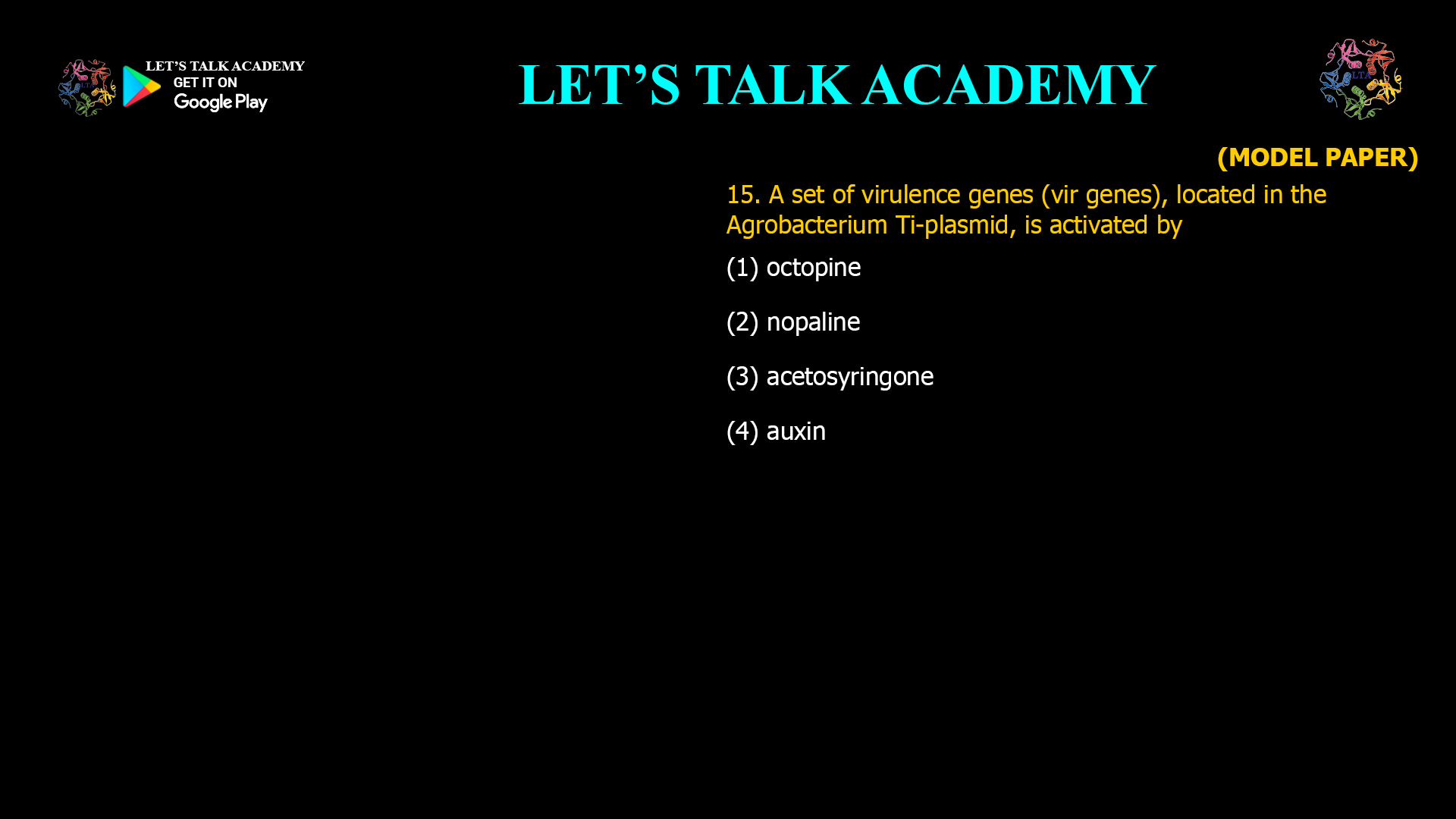- A set of virulence genes (vir genes), located in the Agrobacterium Ti-plasmid, is activated by
(1) octopine (2) nopaline
(3) acetosyringone (4) auxinThe virulence (vir) genes on the Agrobacterium Ti‑plasmid are specifically activated by the plant phenolic compound acetosyringone, so the correct answer is (3) acetosyringone.
Concept: vir gene induction by plant signals
When plant cells are wounded, they release phenolic compounds such as acetosyringone, which are sensed by the Agrobacterium two‑component system VirA/VirG. Binding of acetosyringone activates VirA, which phosphorylates VirG, and the active VirG then turns on transcription of multiple vir genes needed for T‑DNA processing and transfer into the plant genome.
Option‑by‑option explanation
-
Octopine
Octopine is an opine synthesized in transformed plant tumors and catabolized by Agrobacterium; it serves mainly as a nutrient and as a determinant of Ti‑plasmid type (octopine vs nopaline plasmids). Opines can enhance vir gene induction in the presence of acetosyringone but do not by themselves initiate vir gene expression, so this option is not correct. -
Nopaline
Nopaline is another opine produced in crown gall tissue that Agrobacterium uses as a carbon and nitrogen source and as a plasmid marker. Like octopine, it can modulate vir induction but is not the primary plant wound signal that directly activates vir genes. -
Acetosyringone – Correct
Acetosyringone is a phenolic wound signal released by dicot plants that directly activates vir gene expression via the VirA/VirG system, and is routinely added to co‑cultivation media to boost transformation efficiency. -
Auxin
Auxins are plant growth hormones involved in cell elongation and morphogenesis, not in specific vir gene activation. While auxin levels may influence tumor growth after transformation, auxin is not the key inducer of virulence genes on the Ti plasmid.
SEO‑oriented introduction (for article use)
During Agrobacterium‑mediated plant transformation, the bacterial vir genes on the Ti plasmid must be activated so that T‑DNA can be processed and delivered into plant cells. The wounded plant secretes acetosyringone, a phenolic compound that binds the VirA/VirG regulatory system and triggers vir gene expression, which is why acetosyringone—not octopine, nopaline or auxin—is the correct choice in this multiple‑choice question
-



